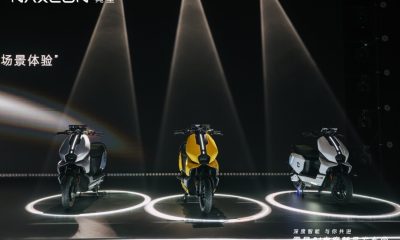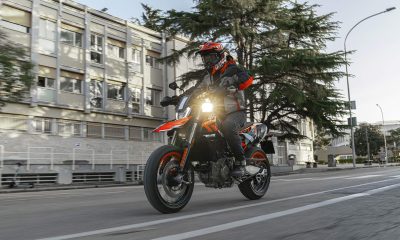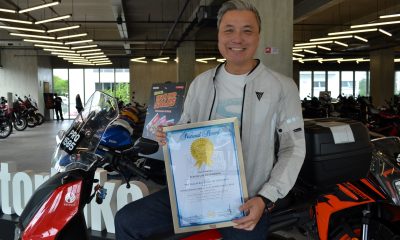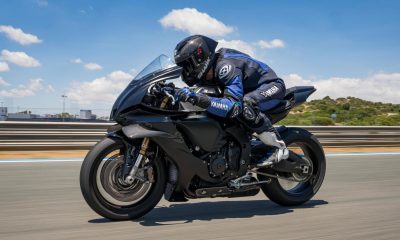Discover Can-Am’s 2025 electric motorcycles, the Pulse and Origin, designed for urban riders with agility, ease of use, and innovative features. Perfect for beginners and city commuting.

Subscribe to our Telegram channel for instant updates!
For the first time since 1987, Can-Am is making a comeback in the two-wheeled world, and it’s doing so with a bold new direction in electric motorcycles. The highly anticipated models, the Can-Am Pulse and Can-Am Origin, are set to hit the market in 2025. Unlike many of today’s electric motorcycles that focus on range or power, Can-Am has taken a different approach. It creates lighter, more agile, and ideal for navigating urban environments. The Pulse and Origin are designed with beginner riders in mind, breaking away from the increasingly high-powered, range-maximizing e-motorcycle trends.
Setting the Standard for Electric Motorcycles
Can-Am aims to significantly shift the electric motorcycle market. The company projects a global market of 95 million customers. This is an ambitious goal considering the early stage of the electric motorcycle industry. Like Tesla with EVs, Can-Am hopes the Pulse and Origin will set industry standards. They aim to make electric motorcycles more accessible and user-friendly.
The Pulse: A Commuter-Friendly E-Motorcycle
The Can-Am Pulse is the more approachable of the two models, crafted specifically for city commuting. Its low 30.86-inch seat height and 390-pound curb weight offer comfort and ease of handling. The bike’s 47-hp motor accelerates from 0 to 60 mph in just 3.8 seconds. The liquid-cooled 8.9 kWh battery provides a range of 100 miles in the city or 80 miles for mixed highway and city rides.

Despite these figures, real-world testing showed that torque mattered more than power output. This is especially in the bike’s Sport+ ride mode, which nearly gave the Pulse enough power to pop a wheelie. However, the instant torque also comes at the cost of battery range, especially on open highways, where aerodynamic inefficiency impacts electric motorcycles the most.
From a design perspective, the Pulse features a futuristic aesthetic, with stylized paneling reminiscent of brands like Husqvarna and Ryvid. However, Can-Am has limited the top speed to 80 mph to maintain range, a decision that works for urban riding but may leave some riders wanting more acceleration for safety in quick-response situations.
Features and Tech: Blending Innovation and Practicality
Both the Pulse and the Origin come with a 10.25-inch touchscreen that integrates Apple CarPlay, though using it requires a Bluetooth device, such as a Cardo Packtalk Edge, to activate Siri. The touchscreen’s functionality is disabled while riding to prioritize safety, but the bike offers switchgear on the left grip for controlling ride modes and readouts.
The electric motor is housed within the swingarm, powering the rear wheel through an enclosed chain system. This design is borrowed from Can-Am’s snow machines. The system offers two regenerative braking systems: passive and active. The passive system engages when the throttle is released. The active system engages by twisting the throttle forward. While the system works well, traditional brakes are needed to fully stop. Regen braking cuts out at around 2 mph.
The Can-Am Origin: Built for Adventure
For those seeking off-road capability, the Can-Am Origin takes the Pulse’s concept and adds rugged versatility.This dual-sport model features longer-travel KYB suspension and larger 21-inch front and 18-inch rear wheels. It also has knobby tires designed for off-road conditions. The Origin is heavier than the Pulse due to these added features. Despite the weight, it performed well in dirt riding. The active regen braking system allowed precise control over rear-wheel speed. This system reduced the need to rely on the foot lever.

Interestingly, despite its off-road focus, the Origin was often preferred for on-road riding. Its additional suspension and knobby tyres provided better feedback to the rider. Its tall stature and Dakar-inspired design gave it a more engaging riding experience than the smoother but somewhat less tactile Pulse.
Challenges and Opportunities
Both models show promise, but they come with a few trade-offs. Testing in 106-degree Texas heat demonstrated the limitations of liquid-cooled batteries, as high temperatures reduced the regen capabilities and range, requiring more frequent charging stops. However, Can-Am claims the battery can charge from 20 per cent to 80 per cent in 50 minutes using a Level 1 or Level 2 charger, which should help mitigate some range anxiety for urban riders.
The starting prices for the Pulse ($13,999) and Origin ($14,499) position these bikes below entry-level models from competitors like Zero Motorcycles and LiveWire. Yet, their performance metrics—especially in terms of range and speed—might make it hard for riders to justify choosing these over similarly priced, conventionally powered bikes. Additionally, the enclosed chain system, while quiet and efficient, adds a level of maintenance that most other electric bikes avoid.
A Solid Option for City Commuters and New Riders
Though they may not dominate any one area, the Can-Am Pulse and Origin represent thoughtfully designed, beginner-friendly electric motorcycles that excel in urban environments. They combine solid performance with unique regenerative braking systems and a relatively affordable price point. For those seeking a smooth, low-maintenance ride in congested city traffic, Can-Am’s 2025 models offer a refreshing alternative to both gas-powered and high-performance electric motorcycles.































Facebook
Instagram
X (Twitter)
YouTube
LinkedIn
RSS